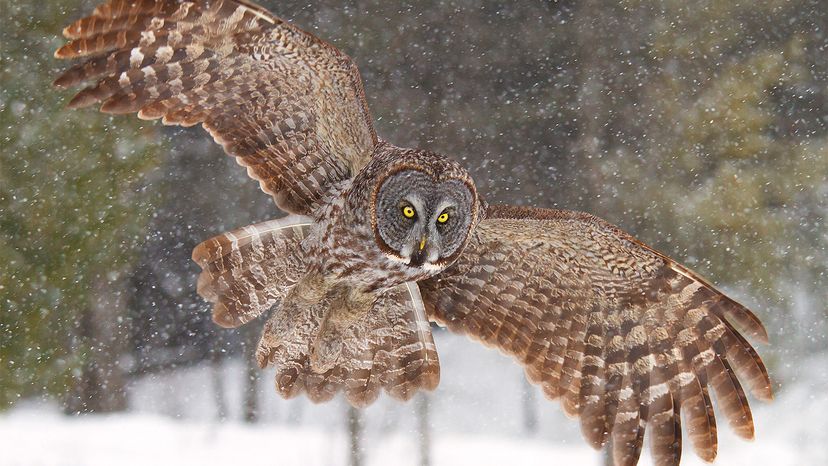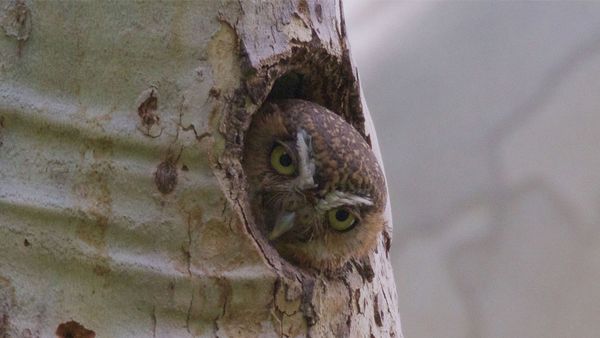There’s no doubting the majesty of owls. On silent, fluffy-edged stealth wings, they hunt small, nocturnal animals while it's dark, occasionally hooting or screaming at each other through the night. Then, when the sun shows up again, they return to their favorite roost and let the other raptors go about their business eating day creatures.
"Owls are probably one of the most widely recognized groups of animals in the world," says Denver Holt, the founder and lead researcher of the Owl Research Institute based in Charlo, Montana.
"They're in all cultures — no matter how far back you go, there's always art or myths or stories about owls. They're on our corporate logos, sports logos; products use them to advertise, they're on castle walls and churches. I have a Greek coin that dates back to 400 B.C.E. with an owl on it."
Even the Chauvet cave in France, which includes Pleistocene art dating back around 30,000 years, contains an etching of an owl. So, what about owls drives humans to treat them as modern-day totems for everything from Tootsie Pop to Trip Advisor and Duolingo? Well, they are pretty cool.
Owls Use Camouflage
Owls are masters of camouflage. During the day, these nocturnal birds use their feathers to help them blend in with their surroundings and hide from predators. That’s why the snowy owl (Bubo scandiacus), aka the white owl, is white — it lives in the tundra. In Hindu mythology, Lakshmi, the goddess of good fortune, rides a white owl, and some see white owls as good omens.
The tawny or brown owl (Strix aluco), on the other hand, matches the tree trunks in the European woodlands it occupies.
Owl Have Unique Eyes
Owls possess what’s known as binocular vision. Their eyes face forward, like humans (and unlike other birds), which allows them to process more complex visual information [source: Klein]. Their humanlike appearance may also contribute to humans' affinity for these unique birds.
Like most nocturnal animals, owls have big eyes that let in more light, allowing them to see in darkness. But instead of spherical eyeballs, owls have cylindrical eyes extending to the back of their head. You can even see some of their eyeballs through their earholes!
Because their eyes aren't spherical, they can't roll around in their heads, which means an owl's round head has to do most of the rolling around work. That’s why they can swivel their heads entirely around on their necks — which adds to their otherworldliness.
Owls Have Super Hearing
Technically, owls don’t have supernatural powers. But it’s not surprising that some ancient cultures believed they did. Without sunlight to see their prey, owls rely on their sense of hearing to hunt.
Their ears are large openings on the sides of their heads — one ear lower than the other, which helps them triangulate sound (a noise goes in one ear a little before it arrives in the other) to tell which direction it's coming from.
To make their sense of hearing even keener, an owl's entire face acts as a satellite dish for sound waves to make their sense of hearing even keener. Their beaks are tiny to keep out of the way, and the circular depressions around their huge eyes boost their ability to snag the sound of a mouse scurrying beneath the snow like a catcher's mitt.


